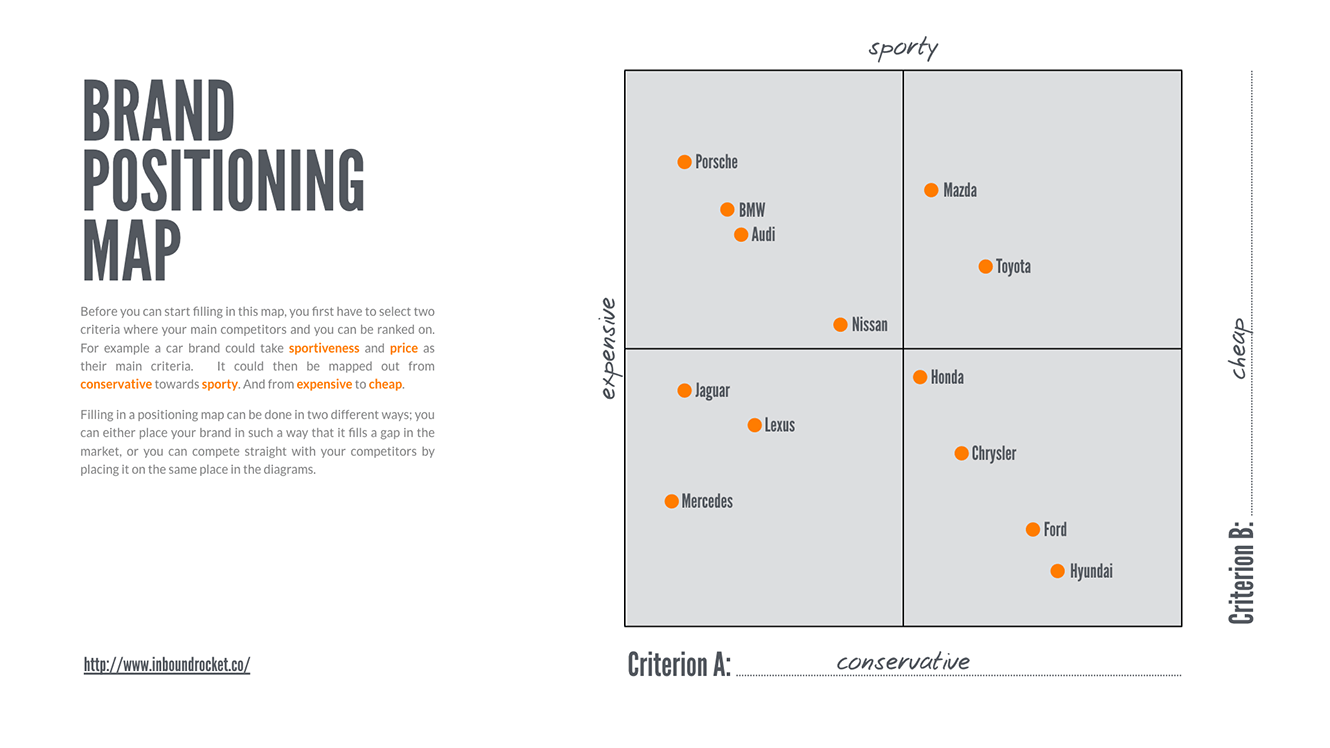
In our previous post, we talked about how you can utilise “lean” startup principles to start building your brand. Today we will look into the six essential parts of any brand story: positioning, promise, personas, personality, product, and pricing.
Most marketers spend countless hours (either in college or at your work) learning about the 4Ps of Marketing. Philip Kotler has left an enormous impact on the industry. Product, Price, Promotion, Place.
A lot has changed in the world since these were first introduced. As a follow-up on our previous post in which we gave an intro into how you can utilise “lean” startup principles to start building your brand. We talked about different ways to describe what a brand is, but what is it that a brand does?
A brand is something intangible, but for most business their brand is or becomes their most important asset over time. An amazing brand will help influence the choices your potential customers, employees, or even your investors are making. In today’s world with so much different choice, such an influence becomes crucial for commercial success and the creation of value.
But that still leaves us with big questions about how to grow your brand.
Why do some brands acquire market share faster than their competitors? Why does the marketing of one brand seem more effective than that of others? What makes a brand powerful?
Today we will be looking into the six essential parts, which make up any great brand story:
- Positioning – How are you useful for your customer?
- Promise – What do you promise to do for your customer?
- Personas – Who are the heroes in your story? Who are the persons you’re trying to help?
- Personality – Who are you?
- Product – What will you offer, over time?
- Pricing – How much is this going to cost your customer?
#1 Branding Essentials: Positioning
A brand adds value when it helps it’s customers go from A to B, where B is the place they want to end up. But how can you make them understand and remember how we can be useful for them in reaching their goals? This is where your positioning comes into play.
Before you can start positioning your new brand you first need to start asking yourself a bunch of questions to help you get started:
- Who is your target customer?
- Which of your customers ambients can you help him or her achieve?
- What would be the main reason someone would buy from you?
- Who is your biggest competitor?
- What differentiates you from this main competitor?
After you’ve written down your answers to the above questions, it’s time to see how your brand can position itself against existing products and services. We use a positioning map for this. Positioning maps are really easy to use, and they are very powerful.
Before you can start filling in this map, you first have to select two criteria where you and your biggest competitors can be ranked on. For example, a car brand could take sportiveness and price as their main criteria.

Download Brand Positioning Template
Filling in a positioning map can be done in two different ways; you can either place your brand in such a way that it fills a gap in the market, or you can compete straight with your competitors by placing it in the same spot in the diagrams.
After you mapped out your positioning, you can start thinking about your positioning statement. A positioning statement is nothing more than your Unique Value Proposition (UVP), which we already discussed earlier. At a minimum use something as Steve Blank’s XYZ: “We help X do Y doing Z”.
#2 Branding Essentials: Promise
Whenever you buy a product or service, you probably already have a mental picture of that product in your head and are thinking about how it will improve your business or life. A lot of times these expectations are based around certain assumptions, which might end up giving you more of a disappointment when you start using the product or service. These expectations can be put in your mind either by the recommendations of others, but sometimes they are communicated by the brand itself. When a brand puts this idea in your head, the brand has control about your experience.
This is called the brand promise.
The promise your brand makes is a to-the-point and an easy to remember version of your positioning statement or UVP. It’s the one thing your customers will always remember about you and will be the first thing that pops up in their mind when they think about you. It’s Nike’s “Just Do It”, it’s McDonalds “I’m loving it” etc.
A brand promise is something that you can communicate very explicit to your audience, or it can be something that you can communicate more subtle by the way you deliver your experience towards your customers.
A promise, however, is only ever good when it’s kept. If you can’t deliver on your promise a lot of times, you will stand to lose your reputation and, as a result, your sales will decline. So why would you risk everything you got on an explicit brand promise? You might be thinking to yourself that it’s safer not to make any promises then to loose on promises you can’t keep. The thing is, there is a huge opportunity to rise above your competitors, by differentiating yourself and getting a market leader position.
A potential customer will always choose the company that appears to offer them more value. A brand promise helps set up the right customer expectations and can help generate excitement for your products or service.
Make your promise, short, to the point and always make your promise come true.
#3 Branding Essentials: Personas
All the great stories ever told, revolve around one or more persons. For you and your brand story, you will need these persons as well. In marketing we call these persons, personas.
Personas are fictional characters created to represent the different user types within a targeted demographic, attitude and/or behaviour set that might use a site, brand or product in a similar way. In other words, you might say that personas are your ideal customer. They are the heroes in your brand story.
So who are these people? There are a lot of different ways to figure out who your ideal customer are:
- you can look at your Google Analytics;
- you can look at your social media profiles;
- you can start talking to people on the street (just like with doing Customer Development);
- you can go to the places where you think they might hang out and just start observing them
There are lots of different ways to try to get data around your buyer personas. But always remember to try to get as clear of a picture as possible of them. Write down their:
- Facts & demographics (Name, gender, age, education, occupation?)
- Behaviours (What websites does he or she visit? Where does he or she gets her information from?)
- Problem & needs (What service, similar to yours, is he/she using but unsatisfied with?)
- Goals & Dreams (What is he/she trying to accomplish? What is most important to him/her?)
- Places (where online and offline can you find him or her?)
- Key influencers (Who does he or she considers a thought leader?)
The more you know, the easier it will be to start tailoring your brand story towards them. Just remember, though, that like everything else you continuously need to test and adapt. What is working for one company doesn’t have to be the same buyer personas as for your business. People change all the time too, so this means you have to revisit your Buyer Personas now and then to make sure that everything is still correct.
Download Buyer Persona Template
#4 Branding Essentials: Personality
A brand’s personality is the way your brand speaks and behaves. By giving your brand a personality, you’re giving your brand a human personality and characteristics. This will help in achieving a differentiation from your competitors. When all of your employees, your advertising, your packaging, etc. starts to tell a story, you will get more “human” to the people interacting with you.
A brand personality is something different than a brand image. While your brand image focuses on tangible benefits and attributes of your brand, your brand personality help to get an emotional connection to your brand. Try for example to imagine both Apple en Google as a person. Now think of you meeting this person in a bar, can you hold it out for longer than 5 minutes with them? This means they’ve done a great job in make their brands more personal.
Your brand’s personality helps shape how people feel and interact with your company. A lot of times a brand’s personality mirrors the personality of their target personas. The idea of brand personality applies to companies big and small and cultivating and harnessing that personality can be a key factor to your success.
Knowing who you are, what you’re selling and who your customers is already a big step into trying to formulate your brand personality. Next up, try to think about the tone-of-voice would best relate to you?
A lot of brand personalities types can be traced down to the “Big Five Personality Traits”, which were first developed in 1961. These big five are:
- experience
- conscientiousness
- extraversion
- agreeableness
- neuroticism.
Based on the positioning, promise, and personas you’ve described before, you can now take a bunch of post-its and write down the words you associate most with your brand personality. Are you adventurous, brave, feminine, funny, serious, young, outspoken, loyal?
Defining your brand personality will give you a better idea of how to face your customers and talk to them. If you validated your brand personality, try to create and establish that personality in a brand guide, when you’re becoming more than a one-man army, this will help ensure that everyone in the company creates content, talks to customers, etc. in a consistent way.
#5 Branding Essentials: Product
Your product is so much more than a bunch of features with a nice wrap around it. But if you look closely at your product there is an entire experience that you can bring to your customers.
This experience can be done via the tangible goods or features that make up your product; it’s when costumers interact with your product. For example, when they search for your product, or when they examine or evaluate it. Interaction with your product doesn’t always have to happen physically, though, this experience can also happen when they see your product or service virtually on your website or in an add.
Another strong component to your product experience are things like service, your visual identity, the support you bring, or the warranty when something is just not bringing the quality standards that you hold high.
So when you look at the buyer journey of any product there are three crucial moments where you can make sure you’re bringing the best experience you can think of:
- Before purchase
Questions to ask yourself – The moment your customer learn about you, how will you communicate what makes you better than your competitors? Maybe your customer needs the approval of someone before making the purchase, how can you help him convince his or her boss that they should go with you? - During purchase
When the moment is there, and he or she makes the buyer decisions, how can you make it as smooth as possible? Is there a way you can deliver some happiness and make him remember the purchase for the rest of his life? These memories will surely help with word of mouth advertising later on. - After purchase
How can your product help make sure your customer feels that he made the right choose? Do you have an amazing onboarding procedure to help him guide towards the first usage?
As you can see the experience of your product goes beyond the features your offering. Trying to think of the entire Buyers Journey and how your product (and your brand) can make a difference is vital
#6 Branding Essentials: Pricing
The last P on our list is also the one most difficult for every founder: Pricing.
The reason we could not let this one out is because of its importance. While all the previous steps are mostly costing you and your brand time and money. This one will make sure that you can generate income and can continue building your company.
So why is pricing important for your brand story? Pricing reflects the actual value of your product or service, and, on the other hand, the perceived value of it in the mind of your customer. If your price doesn’t reflect any of these two and is either too high or too low, it will lead to unsuccessful sales.
For now, let us quickly look at the three most used pricing models:
- Cost-based pricing
Cost-based pricing is all about the cost it will cost for you to make the product, this could be anything from raw material, to the hosting of your website, or the employees you have at your company - Value-based pricing
With value-based pricing, you put a price on the value you think people will perceive your product to be worth. How much would your customer be willing to pay for this product? - Competition-based pricing
You look at what your competitors are pricing, and you make your pricing around that. If you don’t have competitors because you’re operating in such a new space, then look at the closest thing you can find that might be considered the competition.
Bringing it all together, your hero’s journey
If we take everything we learned above, how can we bring it together to your brand story? We will use a tool used by most story writers – a plot diagram. A plot diagram is a tool that is mostly used to break up a story into certain parts. The moment you identify all of the different segments it will be easier for you to analyse the content and gives you a framework for analysing and understanding your brand story.
A plot diagram consists out of 5 different parts:
- The introduction, here you will talk about your buyer personas, their behaviour and the problems they are facing
- The rising action, the moment the suspense starts to build in any story and the problems are getting more worse and complicated
- The climax, this is the turning point of any story, the moment your customers will first hear about your brand and how you can solve their problems
- The falling action, what happens after they found out about your brand? What makes you better than your competitors? And how is your product experience better than them?
- The resolution, the happily ever after. You’ve helped your customers solve their problem, and they become your customers
Plotting the journey out over a timeline you will get the following:

The beautiful thing is when you’ve worked through your entire brand story, you can start thinking about the impact one or more of these items have on your branding. Why does a certain answer matter to you? How can you use the answers in building your brand? Don’t forget that all the elements in which make up your brand story can and need to be tested and be validated!
Did you already start writing your story? Which of these items is the hardest for you to work with? How is the branding of your company coming along? What roadblocks do you see down your marketing path? Leave it in the comments below.

